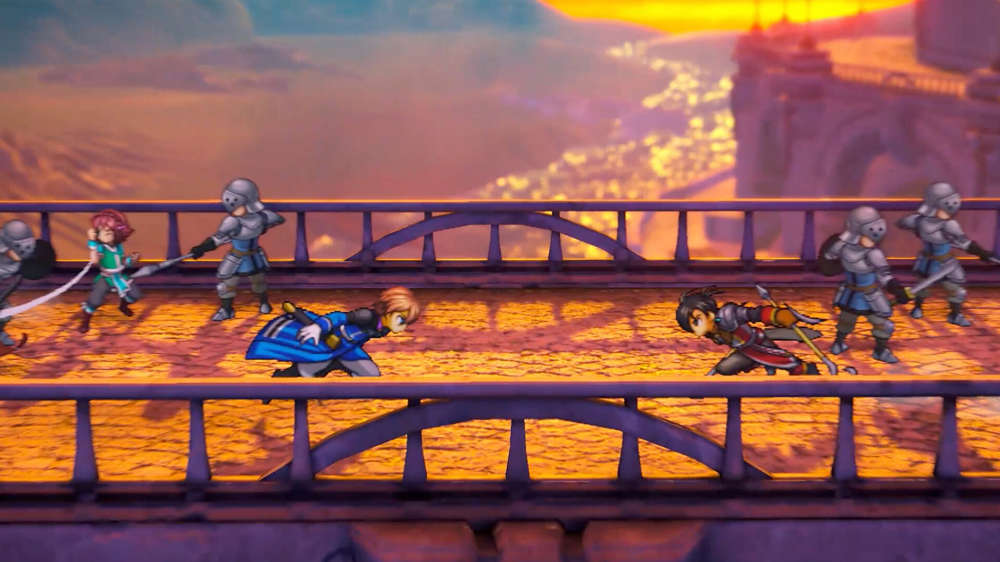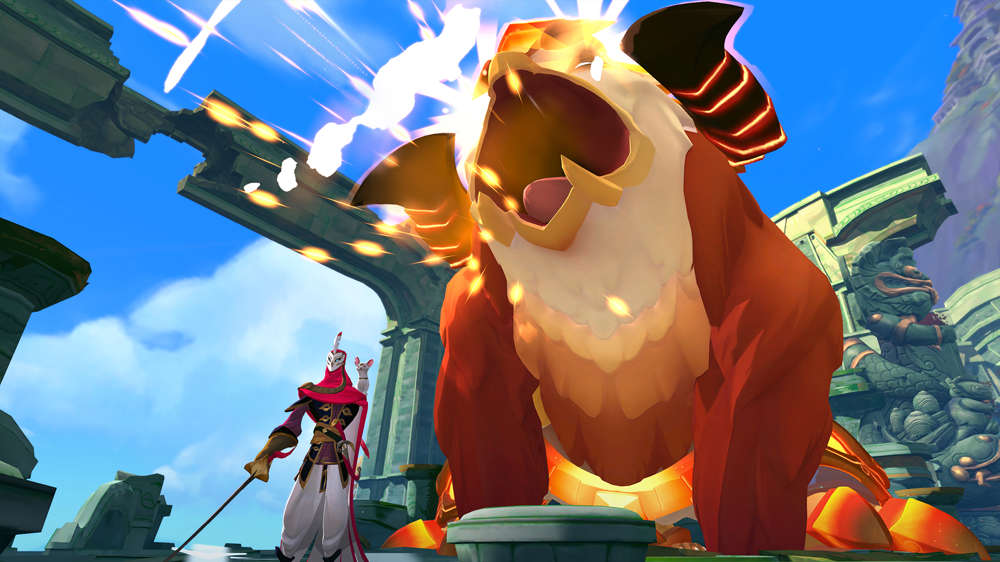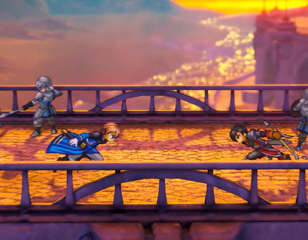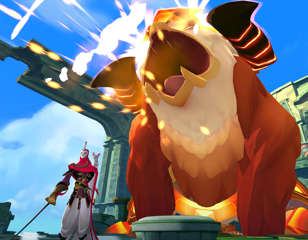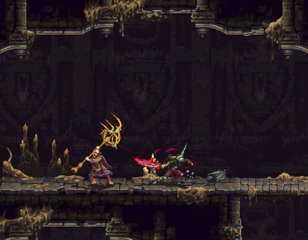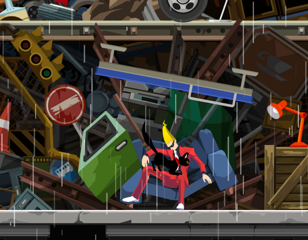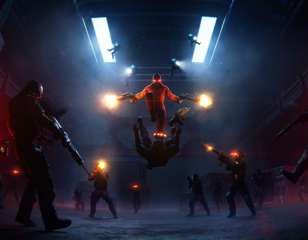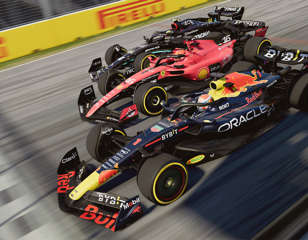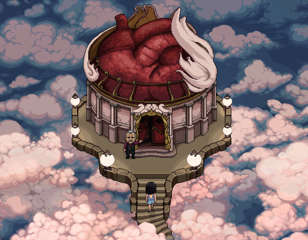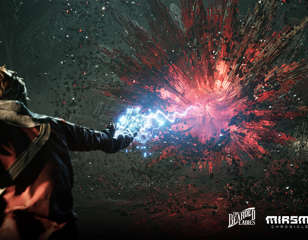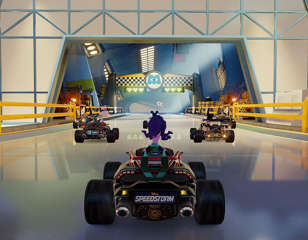The Lamplighters League review: A vintage experience that stays fresh
Check out our review of The Lamplighters League, the new adventure pulp, turn-based strategy game from Hairbrained Schemes.

The Lamplighters League is a fun turn-based strategy game that keeps things fresh with its pulpy aesthetic and characters, and a solid gameplay loop that's not afraid to dish out the consequences of your actions. While the decision to add a real-time element to missions doesn't fully pan out, it's not enough to diminish the game's best qualities.
Images via Hairbrained Schemes
As a genre, there's something magical about turn-based strategy games. It's about as video-gamey as you can get, with much of its core concepts tied to physical board games and pen-and-paper RPGs from decades ago.
It's a hard genre to reinvent at this point, but being memorable doesn't always require an evolution of a classic formula, with small but substantial changes and well-designed gameplay being more than enough to stand out. The Lamplighters League takes this ethos and runs with it to craft an experience I'll look back fondly on for a while.
GGRecon Verdict
The Lamplighters League is a fun turn-based strategy game that keeps things fresh with its pulpy aesthetic and characters, and a solid gameplay loop that's not afraid to dish out the consequences of your actions. While the decision to add a real-time element to missions doesn't fully pan out, it's not enough to diminish the game's best qualities.
Pulp fiction

The Lamplighters League is set in an alternative history shortly after WWI, going behind the scenes of a tumultuous global political situation that's operating a tyrannical cult called the Banished Court. It's composed of three powerful houses, all vying for their own form of world domination by trying to control a mystical tower lying between worlds.
The only thing standing in their way for the hundreds of years prior was the Lamplighters League, a group of scholars who weren't afraid to resort to fisticuffs either. However, with most of them dead, barring an eccentric with a vast fortune called Locke, he's forced to recruit the best of the worst to foil the Court's plans.
All of this world-ending drama and the characters you'll become familiar with are stooped in the kind of mid-century adventure pulp that inspired noir detective stories and Indiana Jones. It's an aesthetic that perfectly matches globe-trotting escapades filled with the occult and romantic notions of adventuring, feeling right at home with the genre and mechanics at play here.
- Check out our Cyberpunk 2077 Phantom Liberty review too
Fresh execution
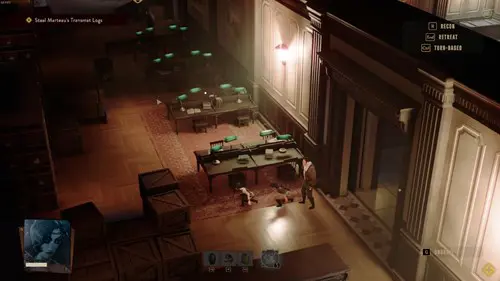
The biggest comparisons you can make for The Lamplighters League are the X-COM series or titles from Mimimi Games, but that doesn't quite do it justice. While the game has many systems and mechanics common to turn-based strategy titles, there are plenty of fresh ideas that are executed well enough to set the game apart from contemporaries in the genre.
It teeters on the edge of the more advanced games in the genre, feeling stripped-back and less overwhelmingly complex, but within that space, it manages to bring the kind of stakes and action-permanence that tactical games thrive on. Think of it as a less punishing alternative, that's also a perfect entry-level into the more deep and cerebral turn-based strategy games.
It consists of two main parts: the home base of the League, where you set up for and choose your missions, and then the actual missions themselves, which begin in real-time before switching to a turn-based strategy once things get loud.
At the home base, you can prepare by utilising resources you pick up on missions. Choosing new skills from the skill tree for your characters, crafting new items and consumables, and talking to the character as they gather in a common room of sorts will occupy your time between missions consistently, making for a very tightly structured experience that's still free-form enough in terms of agency to feel like your own adventure.
On missions themselves, you select three characters and then load them into a procedurally generated map, where items, enemies, and objective locations are somewhat randomised. A core feature of The Lamplighters League is the real-time component that missions begin with.
Until you get spotted, and combat begins, you can wander around freely to scout, set up ambushes, or just stealthy take out most of the enemies, with some missions being entirely possible to complete without ever initiating combat.
At first, I found the controls for these real-time moments a little finicky, and the AI of the two characters you aren't actively controlling can be a little annoying, sometimes not moving to get into cover and hide or taking a weird route due to awkward pathfinding.
I got used to this after a few hours, but it does leave these real-time sections feeling noticeably weaker than the turn-based element, even though the extra dynamic is a welcome addition.
- Here's our Total War: PHARAOH preview if you're looking forward to the game
The best of the worst
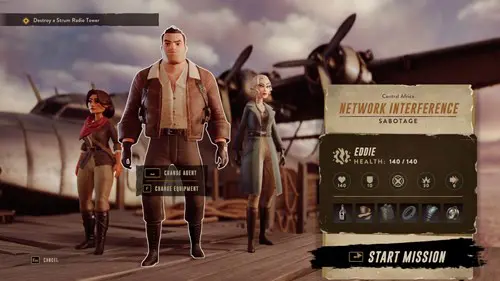
You start off Lamplighters League with three of the aforementioned "best of the worst" misfits: Lateef, an accomplished thief and stealth master; Ingrid, a mercenary bruiser built for punching things; and Eddie, an ex-soldier turned bank robber with a fondness for dual wielding pistols.
Many more of these will join your ranks over the course of the game, expanding the revived League with their unique playstyles and personalities and providing new ways to fight off the Court once and for all.
Each one plays into common tropes of pulp fiction literature, but they all thrive from the party dynamics shown in conversations back at the home base or during mid-mission banter, especially thanks to a standout cast of voice actors bringing them to life.
The turn-based strategy gameplay is where each of the characters comes into their own. Split between melee and ranged, with unique skill trees and archetypes that directly inspire the type of gameplay they shine at, most of the characters feel different and come with plenty of tactical options.
The typical hit chance and crit chance percentages are here when making attacks, along with types of cover, statuses, and everything you'd expect in a modern turn-based game; it's all fundamental stuff, but it's a very much a case of don't fix what's not broken, and the game offers enough difference in other areas to keep it all exciting and fresh.
The skill trees for each of the characters let you decide what abilities or passive to prioritise, but they are designed to be fully completed as you approach the end of the game. Instead, it's special tarot cards you gain on and for completing missions that allow you to further alter character playstyles of your own accord, with some giving unique abilities or special passives that can directly synergise with their capabilities already present in their skill tree.
It's not particularly complex customisation, and the playable identity of each character always remains clear even with three cards applied to them, but it's the type of player-led customisation that's vital for connecting you to them on a mechanical level and making your choices actually feel like your own.
- Want to know about the latest Resident Evil expansion? Check out our Resident Evil 4 Separate Ways review
Doomsday
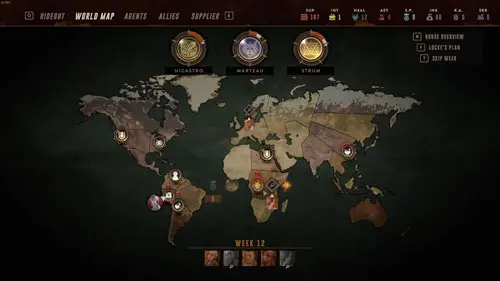
The thing that ties everything together in The Lamplighters League is the world map layer you'll make choices on between missions. A key aspect of this is the doomsday clocks for the three houses in the Banished Court: the Castro, the Marteau, and the Strum.
Each has its own evil goal relating to world domination, and as the in-game weeks tick by, they gain progress toward their goals, unlocking new modifiers, enemies, and features that make your life harder during missions. If any clock hits its maximum, they win and the game is over unless you can complete a difficult last-ditch mission to stop them.
You'll directly combat the clocks during general missions, which knock back their progress, and by completing specific missions, leading up to you finishing off the big boss of each house for good. I love the pressure of time-based mechanics like this, and as the game goes on, you're forced to make hard choices about whom to prioritise and what missions are worth taking on at a given moment.
It makes the overwhelming odds the League face more than a narrative tool to help you support your underdog protagonists, with this mechanic and others directly reinforcing this theme. These kinds of time-gating mechanics will certainly put off some people entirely, but keeping in line with the rest of the game, they are still forgiving enough not to feel punishing and unfair.
There are still consequences for wasting time and failure to manage these carefully over your playthrough, but with the lower difficulty options and special missions that can make quite a dent in the progress of the clocks themselves, you can make your way through by learning as you go.
- We also have a Lies of P review
The Verdict
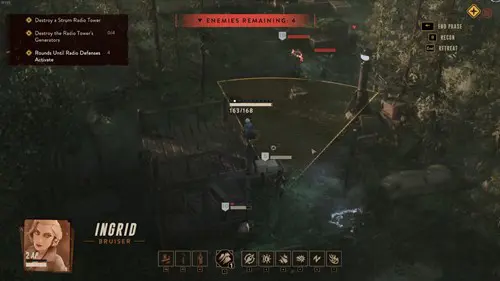
The Lamplighters League is a fun turn-based strategy game that keeps things fresh with its pulpy aesthetic and characters, boasting a solid gameplay loop that's not afraid to dish out the consequences of your actions. While the decision to add a real-time element to missions doesn't fully pan out, it's not enough to diminish the game's best qualities.
4/5
Reviewed on PC. Code provided by publisher.
Comments


